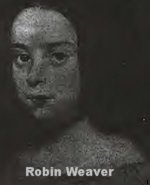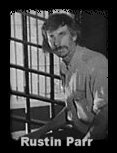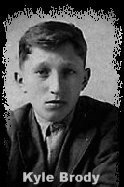|
The pieces of the mystery to the Blair Witch date as far back as the Revolutionary War between the United States and England. Then, every forty to sixty years give or take the mystery resurfaces.

The incidents all take place in and around a place called The Black Hills Forest in Maryland. The Black Hills Forest was actually infamous even prior to the settlement of Europeans in the 1600s. No native tribal Indians dared to venture into the area.

In the 1630s, one Colonel Blair of England asked a local tribesman to help them on an expedition to the area. The native's response was to attempt sabotage to the expedition. Despite this setback, Blair and his men settled a fort there to help defend Lord Calvert's colony to the east against hostile Indian tribes. This fort was named after Colonel Blair, and became the ill-fated town of Blair, Maryland in 1634.
About 150 years later, in 1785, several children in the township of Blair, Maryland had accused an Irish-born woman named Elly Kedward of witchcraft. She was convicted and banished to the woods in the middle of winter.

It was assumed she died from exposure. The following year, in 1786, all of her accusers and half the town's children had vanished. Fearing a curse, the entire township fled as soon as the weather broke, and had vowed never to utter the name Elly Kedward again.
For nearly forty years, the town of Blair was quite literally a ghost town. During this period, in 1809, a hand written book called "The Blair Witch Cult" was published.
|
To the right is a picture of the only known existing copy of "The Blair Witch Cult," on display at the Maryland Historical Society Museum in Baltimore in 1991. It has since been returned to a private collection.
|

|
In the 1820s, the abandoned property of Blair, MD was brought to the attention of a man by the name of Burkitt. He purchased the property from the government, renovated the abandoned buildings, and rechristened the town after himself. Burkittsville was founded in 1824, and still stands in Maryland today.
Just four years after the founding of Burkittsville, there was an incident involving a young child named Eileen Traecle. This small child was wading in a very shallow stream. Allegedly, before the eyes of at least a dozen eyewitnesses, a ghostly white hand reached up from underneath the water and pulled Eileen Traecle into it. The water was reportedly less than a foot deep, yet the body of the little girl was never found. For weeks afterward, several wooden stick figures mysteriously appeared in the creek bed, and the water itself became oily and contaminated for several months.
|
In 1886, a small girl named Robin Weaver had got lost. Several days had gone by and her parents had become alarmed. A search party was organized to go out looking for her. While the search party was out looking, the little girl returned alone. |
 |
She claimed she had been walking in the woods and met a woman who was not so much walking as floating inches off the ground. The woman took the girl by the hand and led her to a house in the woods, where she left the girl in the basement, claiming she would return. The little girl sat in the basement for a long time awaiting the woman's return, but then she became scared and ran away. Eventually she made her way back to the town.
However, after the little girl returned alone, the search party that had gone out after her had not returned. So a second search party was organized to find them. Their search ended at Coffin Rock, near the creek where Eileen Traecle had met her death less than fifty years before.

The second search party claimed they found the first search party stripped of all their clothes and belongings, and their bodies were tied to Coffin Rock. Their intestines had been removed and their reproductive organs had been mutiliated. On their chests, hands, feet, and foreheads, strange cryptic symbols had been painstakingly carved into their skin.
They rushed back into town for reinforcements, but upon a return to Coffin Rock, the bodies had disappeared. There was evidence of blood and ropes on the rock, and the smell of death hung in the air, but the bodies were never found.
In 1940, children began disappearing from the Burkittsville area. The police were stumped, for there were no dependable witnesses or leads.

|
At that time there was a hermit named Rustin Parr, who had been brought up by an abusive father, and had taken to spending his life alone in the solitude of what was then and now known as the Black Hills Woods. |
 |
One day, Rustin Parr came into town from the woods and announced to anyone who cared to listen, saying "I am finally finished." When asked what he was referring to, he would only repeat himself. The local authorities asked him to show them what he meant. He brought them back to an old shack where he lived in the woods.
In the basement they found evidence of several horrible acts of torture and homicide.

Outside the shack and a small distance away they found seven graves marked with piles of stones. When the graves were dug up, the children's bodies were recovered. Their bodies had been treated in much the same way as the accounts of the victims at Coffin Rock. Symbols had been cut into their faces, chests, hands and feet. They had been disembowled.
|
They also discovered an eighth missing child, Kyle Brody, who was traumatized and found standing in the corner of the basement. It was Kyle's testimony in court that helped convict Rustin Parr of murdering the seven children. |

| |
|
Rustin Parr, it was reported, admitted to the murders, saying the voice of an old woman told him to do these horrible deeds. After the seventh death, the old woman's voice told him he was finally free. He was sentenced to death by hanging, and his house was burned to the ground.
|  |
One has to imagine why the eighth missing child, Kyle Brody, was spared being murdered. Could this child have been involved in the murders? Upon closer examination of Kyle Brody's life, some very interesting things come to light.
None of the seven children knew each other, except for Kyle, who knew all of them.
|
As Kyle Brody grew up, he had a history of criminal behavior, and was committed to MSICI - the Maryland State Institute for the Criminally Insane in Baltimore where he spent a great deal of time during the 1950s and 1960s.
|  |
In 1969, a film documentary called White Enamel was made. It depicted the conditions in several mental institutions - most notably MSICI in Maryland where Kyle Brody was. In the film there is footage of Kyle in his cell chanting the phrase, "Never Given!", the same phrase Rustin Parr had been heard screaming the night before his execution.
|
Other footage shows Kyle Brody writing on a large art pad. As the camera got closer, it became apparent that what he is writing is Transitus Fluvii - the witchcraft language. |

|
The footage was examined by an expert who determined that it was indeed Transitus Fluvii. Transitus Fluvii is a rare language, yet Kyle is seen writing it correctly, from right to left.
In 1999, a film called the Blair Witch Project was released. Although the film is a work of fiction, it was written around well documented historic incidents which have been covered here on this website.
The best works of fiction seem to always have one foot in truth. Apparently the human spirit can somehow sense the truths behind it, and in this case, the reality of what is known as spiritual evil.
A Production of Late Nite Radio
|